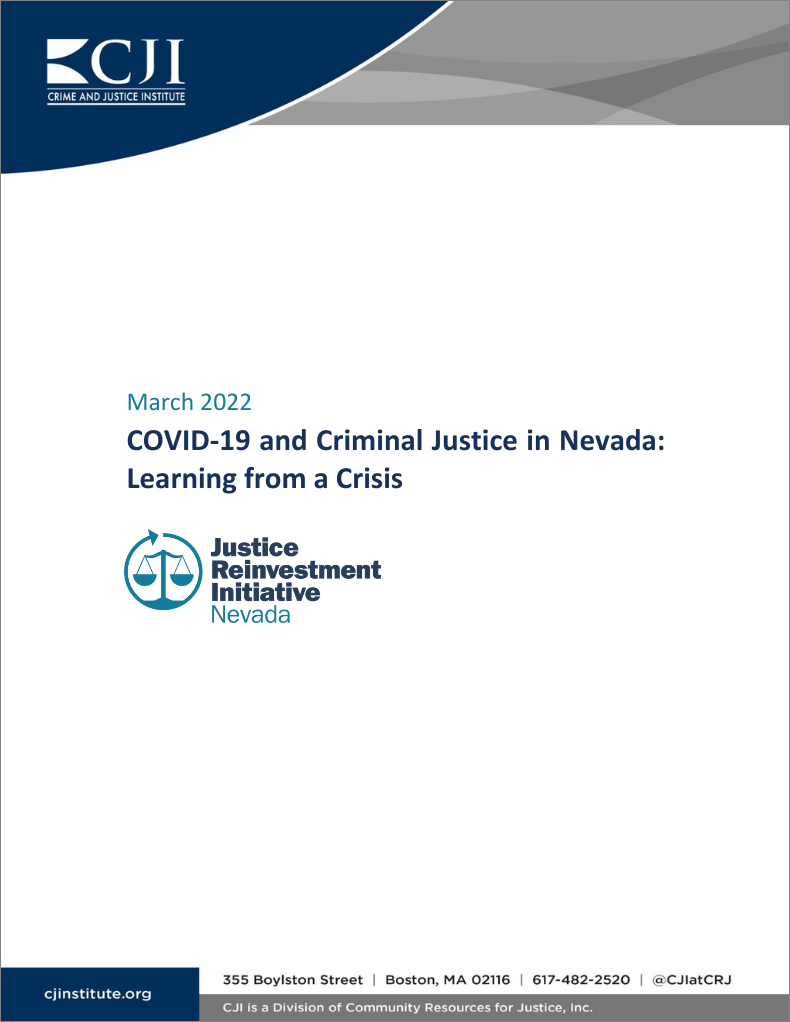
Click here to read the full report.
Click here to read a summary of the report recommendations.
Beginning in 2018, to address significant 10-year growth in its prison population, Nevada participated in the Justice Reinvestment Initiative (JRI), a public-private partnership funded by the Bureau of Justice Assistance and The Pew Charitable Trusts. As a result of the JRI effort, Nevada passed Assembly Bill 236, a piece of legislation that took effect on July 1, 2020, when much of the state’s normal operations were halted by the COVID-19 pandemic. As in the rest of the country, the effects of the pandemic on Nevada’s justice system were dramatic and far-reaching: statewide shutdowns led to fewer officers on the streets and fewer case filings, and slowed court processes. In the corrections system, state agencies struggled at times to find the right balance of policies to protect individuals in custody and staff, and elected not to increase releases in order to reduce population density. Oversight of criminal justice policy responses to the pandemic was diffuse, leaving agencies and localities largely to determine themselves how to respond to the new and challenging circumstances.
In the spring of 2021, Nevada state leaders sought technical assistance from the Crime and Justice Institute (CJI), asking CJI to conduct an assessment of how the pandemic affected not only the implementation of AB 236, but also the state’s criminal justice system as a whole. Nevada also asked CJI to assess state and local policy changes that occurred in response to the pandemic, to determine their efficacy and potential sustainability, and their effect on the JRI changes.
CJI released its report, “COVID-19 and Criminal Justice in Nevada: Learning from a Crisis” in March 2022. The report contains 12 recommendations intended to:
- Elevate and strengthen positive policies and practices adopted in Nevada during the pandemic;
- Reduce the density of the prison and jail environment to better protect the health of corrections staff and the incarcerated population, both in the present time and in the event of future health crises; and
- Optimize cooperation, coordination, and transparency among the various components of Nevada’s public safety, public health, and justice systems.